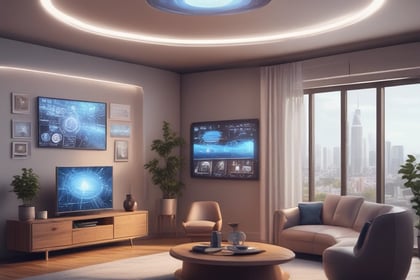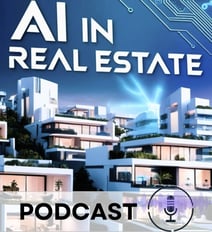
SMART BLOG
Key Statistics and Insights related to smart homes
1. Market Size & Growth
Global Market Value: Projected to reach 273.2 billion by 2028 (CAGR of 18.3%) [MarketsandMarkets].
Drivers: Rising demand for energy-efficient solutions, AI/voice assistant adoption, and increased IoT connectivity (5G, Wi-Fi 6).
2. Adoption Rates
US Households: ~48% own at least one smart home device (Statista, 2023).
Global Penetration: Expected to reach 25% of households by 2025 (Juniper Research).
Top Countries: US, China, Germany, UK, and Japan lead in adoption.
3. Popular Devices
Smart Speakers: 35% of US households own devices like Amazon Echo or Google Nest.
Security Cameras: 20% adoption rate globally (Parks Associates).
Smart Thermostats: ~15% of US homes use devices like Nest or Ecobee.
Smart Lighting: 12% global adoption (e.g., Philips Hue).
4. Integration Platforms
Amazon Alexa: 100,000+ compatible devices.
Google Assistant: 80,000+ devices.
Apple HomeKit: 30,000+ devices.
Matter Protocol: 1,000+ certified devices (as of 2024), unifying ecosystems like Alexa, Google, and Apple.
5. Usage Patterns
Voice Commands: 60% of users control devices via voice (e.g., "turn off lights").
Energy Savings: Smart thermostats reduce energy bills by ~10-12% on average (Energy Star).
Security: 70% of users report enhanced safety with smart cameras/doorbells.
6. User Demographics
Age: 18–34-year-olds adopt 2x faster than older groups.
Income: 60% of users earn $75k+/year (Pew Research).
Renters: 25% adoption in rental properties, driven by portable devices (e.g., smart plugs)
7. Security & Privacy Concerns
User Concerns: 58% worry about data breaches (Deloitte, 2023).
Mitigation: 65% of manufacturers now prioritize end-to-end encryption and regular firmware updates.
8. Challenges
Interoperability: 40% of users face compatibility issues between brands.
Cost: 30% cite high upfront costs as a barrier.
Complexity: 25% struggle with setup/configuration.
9. Future Trends
AI Integration: Growth in predictive automation (e.g., adjusting temps based on habits).
Sustainability: Smart energy systems expected to cut global CO2 emissions by 6% by 2030.
Healthcare: Senior-focused devices (e.g., fall detection) to grow at 22% CAGR through 2027.


Future Home Trends: A Comprehensive Overview
Smart Home Evolution
Advanced AI Integration: Homes will feature AI systems that learn habits, adjusting lighting, temperature, and security autonomously.
Voice and Gesture Control: Beyond voice assistants, expect gesture-controlled interfaces for appliances and systems.
Health Monitoring: Sensors for air quality, humidity, and even vital signs to promote wellness.
Sustainability and Eco-Conscious Design
Renewable Energy: Solar panels, home wind turbines, and energy storage systems (e.g., Tesla Powerwall).
Sustainable Materials: Bamboo, reclaimed wood, recycled metals, and low-VOC paints.
Water Conservation: Greywater recycling, rainwater harvesting, and smart irrigation.
Flexible and Multi-Functional Spaces
Adaptable Rooms: Convertible areas for work, exercise, and leisure (e.g., foldaway desks, movable partitions).
Home Offices: Soundproofing, ergonomic designs, and tech-integrated workspaces.
Multi-Generational Living: Separate suites, accessory dwelling units (ADUs), and dual-purpose furniture.
Health-Centric Design
Biophilic Elements: Natural light, indoor plants, and organic materials to reduce stress.
Circadian Lighting: Systems mimicking natural light cycles to regulate sleep patterns.
Non-Toxic Interiors: Antimicrobial surfaces and hypoallergenic materials.
Indoor-Outdoor Integration
Seamless Transitions: Bi-fold doors, retractable walls, and rooftop gardens.
Functional Outdoor Spaces: Outdoor kitchens, edible gardens, and weather-resistant tech.
Aging-in-Place Features
Universal Design: Walk-in showers, no-step entries, and smart assistive devices (e.g., voice-controlled aids).
Innovative Construction Techniques
3D-Printed Homes: Cost-effective, rapid construction with unique architectural possibilities.
Modular/Prefab Homes: Customizable, eco-friendly, and efficient building methods.
Tech-Driven Aesthetics and Personalization
Digital Art Displays: Walls with dynamic digital artwork.
Maximalism Meets Minimalism: Bold colors paired with Japandi (Scandinavian-Japanese fusion) simplicity.
Security and Privacy
Advanced Systems: Facial recognition, AI surveillance, and encrypted smart locks.
Community and Shared Spaces
Co-Living Amenities: Shared coworking areas, gardens, and recreational facilities in urban complexes.
Touchless and Sanitation-Focused Tech
Auto-Sanitization: UV-C light sanitizers and self-cleaning surfaces post-pandemic.
Mobility and Compact Living
Tiny Homes: Minimalist living with eco-friendly footprints and multifunctional furniture.
Emerging Trends to Watch
Self-Healing Materials: Walls or surfaces that repair scratches or cracks.
Holographic Interfaces: Virtual assistants projected as 3D holograms.
AR/VR Design Tools: Virtual staging for remodeling or decor experiments.
*These trends reflect a shift toward homes that are adaptive, sustainable, and deeply integrated with technology, while prioritizing health, community, and personal expression.




Millenials Impact on Smart Homes
First, who are millennials? They're people born roughly between 1981 and 1996, so they're in their late 20s to early 40s now. They're a big demographic, probably a significant portion of home buyers. Then, what are smart homes? Homes equipped with internet-connected devices for automation, security, energy efficiency, etc.
So, how are these two factors influencing real estate? Let's think about millennials' preferences. They value technology, convenience, sustainability, maybe affordability. They might prefer urban areas or certain types of housing. Smart homes add features that could align with these preferences. Maybe they're driving demand for homes with smart tech, which in turn affects how properties are marketed, their value, and what developers include in new builds.
Let's consider a few things. First, home buying trends: millennials are entering the housing market, maybe facing challenges like student debt, so affordability is key. But they also want tech-integrated homes. How does that affect the market? Maybe developers are adding smart features to attract buyers. Then, rental market: millennials might rent longer, so landlords could install smart devices to appeal to them.
Sustainability is another aspect. Smart homes can be more energy-efficient (smart thermostats, lights), which aligns with millennials' environmental concerns. So real estate that's eco-friendly with smart tech might be more desirable.
Investment opportunities: Real estate investors might focus on properties that can be upgraded with smart tech. Home automation as a selling point. Also, data from smart devices could help in property management—predict maintenance issues, optimize energy use.
Challenges: Privacy concerns with smart devices. Older homes might need retrofitting, which can be expensive. Maybe a divide between high-end smart homes and older stock. Also, not all buyers might prioritize smart tech, so it's a matter of market differentiation.
So how are real estate agents adapting? Maybe they highlight smart features in listings. Virtual tours integrated with smart home demonstrations or using apps to control home features during showings.
Another angle is the impact on home design. Open floor plans, connectivity infrastructure (high-speed internet essential for smart homes), built-in charging stations, etc. New constructions might have these as standard.
Property values: Homes with smart technology might sell for more. But is that proven? Maybe some studies show that, or it's still emerging. Appraisers might need to consider tech features when assessing value.
Potential for tech obsolescence: Smart tech can become outdated quickly. How does that affect long-term value? Maybe homes need to be adaptable for future tech upgrades.
Rentals: Smart locks, security systems, energy management could make rentals more attractive. Landlords might use smart devices for remote management, like thermostats or leak detectors.
Demographic shifts: Millennials might prefer urban areas with shorter commutes, but with remote work, maybe suburban areas with home offices equipped with smart tech. The pandemic's effect on remote work could tie into this.
Also, financing and insurance: Homes with smart security and safety features (like smoke detectors, cameras) might get insurance discounts. Lenders might offer better terms for energy-efficient smart homes.
Potential downsides? Example, reliance on technology could be a barrier for some or interoperability issues between different smart devices.
Millennials and smart homes are significantly transforming the real estate landscape through several key trends and adaptations. In summary these factors are driving smart home growth with millineals:
1. Demand for Tech-Integrated and Sustainable Living
Millennial Preferences: As digital natives, millennials prioritize convenience, connectivity, and sustainability. They seek homes with integrated smart technology (e.g., Nest thermostats, Ring doorbells) and energy-efficient features, aligning with their environmental values.
Smart Home Adoption: Properties with smart devices (voice assistants, automated lighting, security systems) are increasingly marketed as premium, attracting tech-savvy buyers. Studies suggest homes with smart features can sell faster and at higher prices.
2. Impact on Home Design and Construction
New Developments: Builders are incorporating smart infrastructure (pre-wired for IoT, high-speed internet, EV charging stations) as standard. Open layouts and home offices cater to remote work trends.
Retrofitting Challenges: Older homes may require costly upgrades to compete, creating a market divide between modern smart homes and traditional properties.
3. Rental Market Evolution
Landlord Strategies: To appeal to millennial renters, landlords install smart locks, thermostats, and security systems. These features enhance appeal and enable remote property management.
Data-Driven Management: Smart devices help landlords monitor maintenance (e.g., leak detectors) and optimize energy use, reducing costs.
4. Sustainability and Financial Incentives
Energy Efficiency: Smart thermostats and lighting reduce utility bills, appealing to eco-conscious buyers. Homes with LEED certification or solar panels gain traction.
Insurance and Loans: Insurers may offer discounts for smart security systems, while lenders provide favorable terms for energy-efficient homes.
5. Investment and Market Dynamics
Tech as a Value Add: Investors target properties upgradable with smart tech, recognizing their higher resale potential. Proptech startups thrive by offering IoT solutions for real estate.
Virtual Tools: Agents use virtual tours and apps to showcase smart features, enhancing buyer engagement.
6. Challenges and Considerations
Privacy and Security: Concerns about data breaches from connected devices may deter some buyers.
Tech Obsolescence: Rapid innovation risks making today’s smart features outdated, necessitating adaptable infrastructure.
Affordability Barriers: While millennials value tech, student debt and rising home prices may limit purchasing power, emphasizing the need for cost-effective solutions.
Conclusion
Millennials’ tech-driven lifestyles and the rise of smart homes are reshaping real estate through demand for connected, sustainable living spaces. This shift influences construction practices, rental strategies, and investment priorities, while posing challenges around privacy and affordability. As the market evolves, adaptability and integration of future-proof technologies will be critical for stakeholders.


